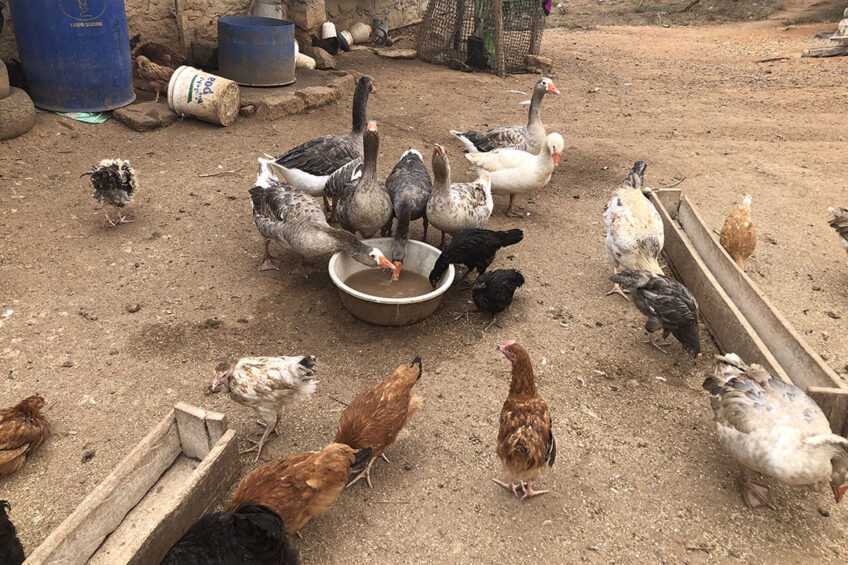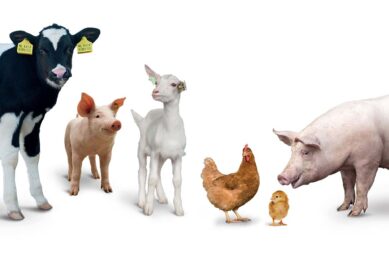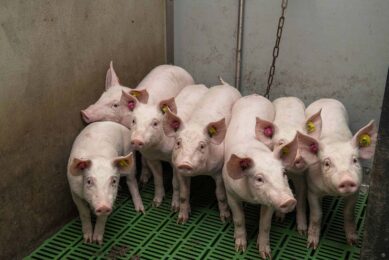Could bacteriophages play a part in poultry farming?

Many Kenyan poultry farmers still opt to use antibiotics to treat infections. Studies show however, there is a high prevalence of resistance to clinically relevant antibiotics for example. Bacteriophages could aid in alleviating antibiotic resistance in poultry farming in Africa.
Africa’s population continues to boom, from 476 million in 1980 to 1.4 billion today to a projected 2.5 billion by 2050. More than 4 out of 5 of those new Africans will be city-dwellers. This has resulted in a deepening dependency on livestock as a source of income, livelihood and as a source of protein and micro-nutrients. In African countries such as Kenya, poultry is a bedrock for livestock farming because of their small body size, permitting more birds in a smaller holding, their relatively short life cycle and their robust adaptability to environmental conditions. The FAO has predicted that demand for poultry in Kenya will rapidly increase from 89,000 tons per year in 2010 to 238,000 tons by 2030, and to almost 537,000 tons by 2050.
Challenges facing poultry farming in Kenya
As in many other low- and middle-income countries, Kenyan poultry farming and production face challenges such as:
- low hygienic standards,
- low-quality feed,
- uncontrolled bird trade,
- lack of bird containment
- limited access to veterinary and diagnostic laboratory services.
Cross-species disease transmission
Backyard poultry farming remains the primary source of protein among households while high-density commercialisation is practised by only a few farmers. Adding to these challenges, some farmers practising backyard poultry farming rear different species of birds in one holding area, creating a concern about cross-species transmission of diseases that could influence pathogen dynamics of poultry agriculture. Common bacterial pathogens isolated during spill over events between backyard chickens and wild birds include Mycoplasma spp., Escherichia coli and Salmonella spp.
Improper use of antibiotics
Most farmers opt to use antibiotics to prevent, manage and treat infections as well as to stay competitive in the poultry industry. The improper use of antibiotics such as for prophylaxis, growth promotion, egg production improvement, and a lack of awareness among poultry farmers about the problem of antimicrobial resistance all contribute to a high prevalence of antimicrobial resistance in poultry. Data generated from studies in Kenya found a high prevalence of resistance to ampicillin (76%), tetracycline(71%), sulphamethoxazole(70%), and co-trimoxazole (66%).

One Health problem
The indiscriminate use of antibiotics may in fact aid in promoting the health and general welfare of birds within a flock, but this comes at the cost of a growing proportion of antimicrobial resistant bacteria. Of particular importance is the interdependence between human, animal, and environmental dimensions of antimicrobial resistance. Most of the classes of antimicrobials used to treat poultry or livestock infection end up in the environment and could end up in humans, creating a One Health problem—that is, a problem that taxes the resources of human, environmental and veterinary health experts. That possibility has generated growing interest in bacteriophage therapy, both against foodborne pathogens and as an alternative to antibiotic usage in poultry.
Bacteriophages to the rescue
Phages are effective antibacterial agents that are active against both antibiotic-resistant and antibiotic-sensitive strains while leaving the normal microbiota unaffected. Phages can be isolated from any environment their bacterial hosts inhabit, such as faecal material obtained from farms, food processing plants, slurry lagoons and sewages. The phages that are recommended for various applications typically follow the lytic cycle. To accomplish a successful cycle, the phage uses its tail fibres to attach to specific receptor(s) on the host cell surface, after which they inject their DNA and commandeer the host’s metabolic processes. Eventually, as the phages replicate, they kill the bacterial host and release more virions.
The killing capacity of a phage is determined by screening it against multiple strains of the target pathogen. To control bacterial infections both narrow and broad host range phages can be used. Highly specific, narrow host range phage can be applied with minimal disturbance to other microbial populations, while a broad host-range phage provides a better scope of lysis on a wider number of bacterial pathogens. Multiple phages can also be combined as a cocktail to improve phage coverage of distinct bacterial species. Phage therapy has been explored extensively in poultry in different parts of the world to treat Escherichia coli, Campylobacter spp., Salmonella spp and Clostridium perfringens. In the fight to control Salmonellosis in poultry, samples from numerous poultry farms in Kenya were analysed for phages that target multiple strains of interest (Figure 1).
Figure 1 – Percentage of samples containing Salmonella phages against various Salmonella strains.

Hurdles of phage therapy for poultry in Kenya
4 challenges face the use of phages against bacterial infections in farming, either pre- or post-slaughter:
- initial phage selection,
- phage delivery,
- resistance development and
- regulatory approval.
Encouraging farmers to understand the value of a phage product and the impact it will have for them is undeniably challenging, considering the dynamics of poultry farming in most of the low- and middle-income countries. In addition, consideration must be given to the needs of the farmer, such as the need for storage without a cold chain, ease of mass delivery to the flock, the use for combination therapy targeting multiple viral and bacterial pathogens simultaneously, and whether the price per head may be affordable to most poultry farmers.
The future of bacteriophages
Though the dynamics of farming may be different in developing countries, there are multiple intervention points that could be targeted with different phage therapeutic strategies. Factoring this in, phages can play a potentially vital role in contributing to the arsenal against antibiotic resistance.
References are available on request.
Authors:
Dr Nicholas Svitek and Dr Angela Makumi, International Livestock Research Institute, Nairobi, Kenya






